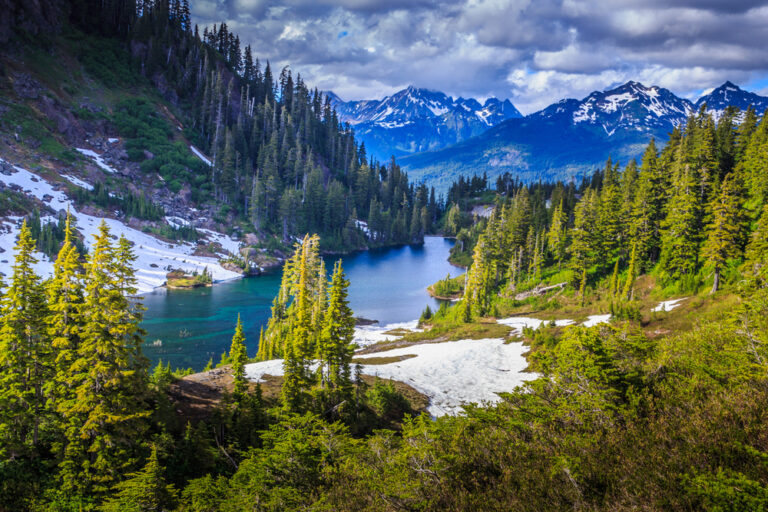
When it comes to classic RV travel adventures, a tour of our nation’s vast system of national parks pretty much tops the list. There’s no denying that America’s a looker, not to mention all the outdoor recreation activities these stunning landscapes have to offer.
Whether you’re looking to hit the trails or just to relax fireside with an epic view and a cold one, RVing is perhaps the very best ways to tour the national parks. You won’t have to worry about pitching (or taking down) a finicky tent every time you’re ready to pick up camp — and since chances are you’re taking this epic journey over the summer, let’s be real: it’s pretty darn nice to have air conditioning. And a real bed. And a refrigerator.
You catch our drift.
But as majestic as the American National Parks are, you’re apt to have a much better time during your visit if you put in a little bit of forethought and planning. There’s no way to go wrong with the views, of course… but if you want to secure a campsite (or hike a trail without feeling like you’re in a grocery store queue), you’ll need to be a little bit strategic.
In this post, we’ll take you through everything you need to know about how to enjoy an amazing RV excursion to one or more of America’s national parks, including information about entry fees, campsite costs, and reservations. We’ll start with some brief (but fascinating!) history and information about the National Park Service, and how these areas came to be parks in the first place.
Alright, ready for adventure? Let’s dive in!
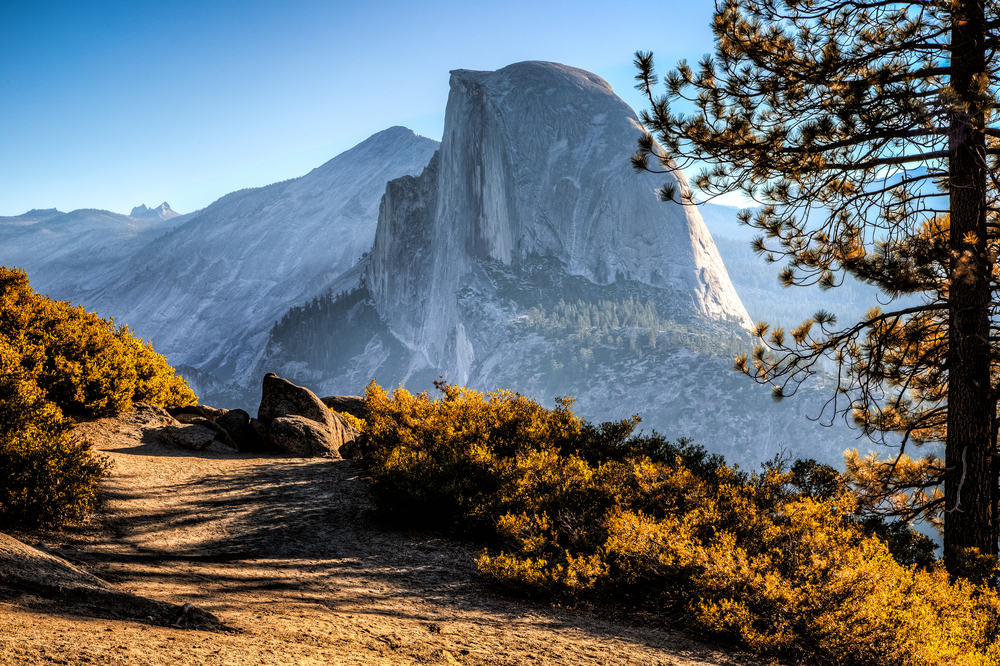
American National Parks: A Brief History
So — how did the national parks come to be in the first place? And who takes care of them?
The answers are actually pretty amazing. In fact, they reveal the US as something of a trendsetter.
Although more than a hundred countries have protected lands classified as national parks today, America was actually the very first nation to create one. The famous (and uber-popular) Yellowstone National Park in Wyoming was the first national park in the whole world! Wild, right?
According to the National Park Service, Congress, and President Ulysses S. Grant established Yellowstone National Park when it passed the Act of March 1, 1872, declaring it “as a public park or pleasuring ground for the benefit and enjoyment of the people” and placing it “under exclusive control of the Secretary of the Interior.”
If you’ve ever been to Yellowstone, it’s no surprise that the government was moved to preserve it. From Technicolor, and boiling-hot geothermal springs to mighty flowing rivers and waterfalls, it’s some of the most unique and breathtaking landscape not only in America, but in the world. It’s also home to some 300 species of birds, 16 species of fish, and more than 60 species of mammals, including grizzly bears, black bears, bison, wolves, and more.
With an eye toward ecological conservation and protecting the plant and animal life that’s abundant in these landscapes, the US government went on to establish many more national parks and monuments, many of which were in the wide-open west, which was still largely federally held. It wasn’t until almost 50 years later, however, that the National Park Service as we know it came into existence, when President Woodrow Wilson signed the new bureau into existence on August 25, 1916.
Fast forward to today, and our country is teeming with these preserved wild spaces: we have 60 national parks and hundreds of national monuments, memorials, preserves, and historic sites. All of these are under the care, keeping, and jurisdiction of the National Park Service, which offers interpretive and recreational opportunities in many of these areas. In fact, that’s what that sometimes-hefty gate fee is paying for — the care, keeping, and preservation of the landscape for years to come. Makes your $30 seem like a totally reasonable investment, right?
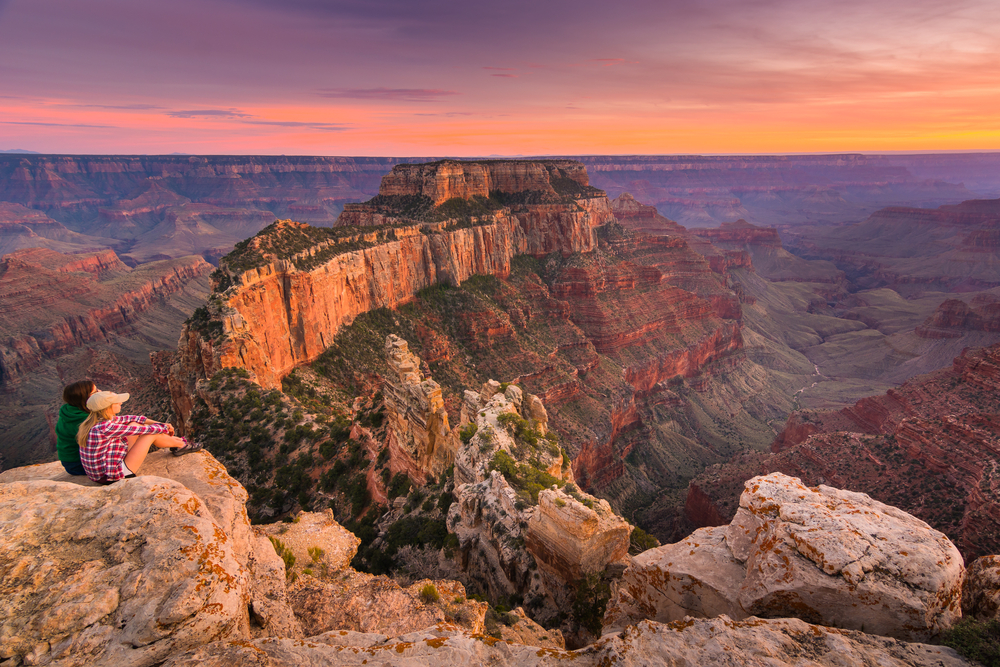
Planning Your National Parks Adventure
Learning about the national parks is one thing, but actually experiencing them is another — and for most RVers, it’s near the tippy-top of their travel bucket list. No matter how you prefer to enjoy the great outdoors, or even if you’re just getting acquainted for the first time, the national parks offer unparalleled access to some of our country’s wildest vistas.
It’s very popular for RVers to take long summer road trips during which they visit multiple national park locations, especially in the American west. For example, many travelers take on a tour of what’s known as the Grand Circle — an epic trip of the southwest that winds its way through five states and, depending on how you set it up, almost a dozen national parks and recreational areas. It’s also common for RVers to make a circuit of the more northerly national parks, like Yellowstone, Glacier, Olympic and Yosemite.
And some travelers just spend longer periods of time focused on one or two parks, enjoying all the outdoor recreation they can manage. After all, each of these sites can be made up of thousands of acres and hundreds of trail miles; you could spend an entire lifetime exploring just one!
Some of the most popular activities at the national parks include hiking, mountain biking, bird watching, fishing, kayaking, mountaineering, and much, much more. Obviously, which activities are available to you will depend on where you’re headed as well as what season you’ll enjoy once you get there. For example, although for-northern Montana’s Glacier National Park is open all year round, for most of the year, heavy snow cover means many facilities are closed and many roads are inaccessible. On its iconic Going to the Sun Road, ice and snow can remain until well into July! That’s why it’s so important to check your target park’s official website for weather and other alerts before you get there.
Of course, if you’re headed to the parks to ski or snowshoe, all that snow is just a bonus. No matter where or when you’re going, though, be sure you’re informed ahead of time and that you have the right gear on board to enjoy your favorite adventures — whether that means hiking boots or ski poles.
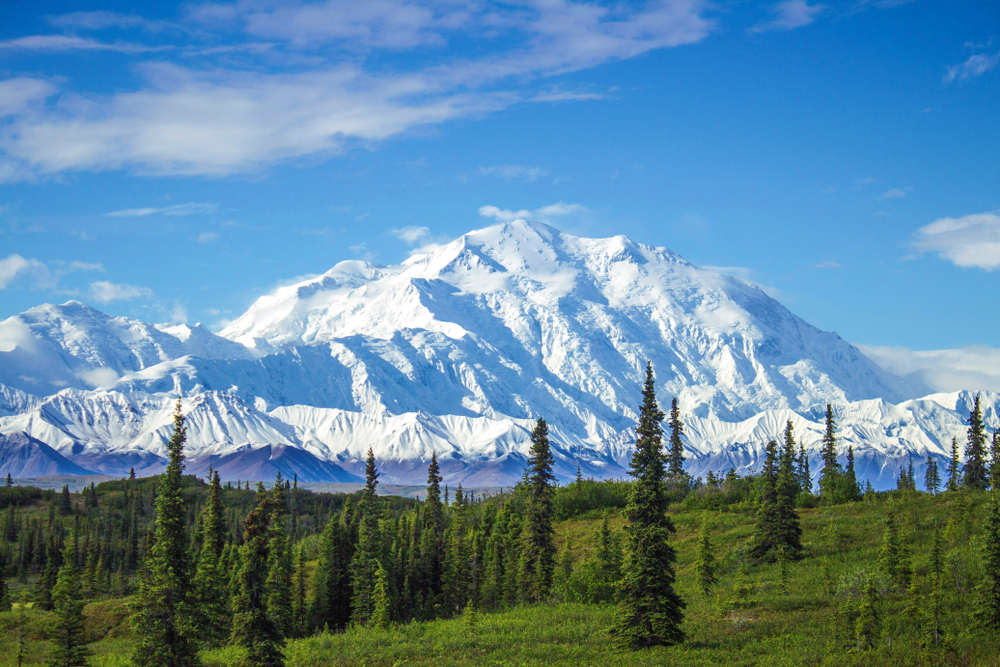
A Comprehensive List of US National Parks
As mentioned above, America boasts 60 national parks. That’s a whole lot of beautiful landscape to visit!
We’ll get into specifics about camping, fees, and the popular parks in a moment, but for your convenience, here’s a quick list of the national parks by state.
Alaska
- Glacier Bay National Park
- Katmai National Park
- Kenai Fjords National Park
- Lake Clark National Park
- Wrangell-St. Elias National Park
- Denali National Park
- Kobuk Valley National Park
- Gates of the Arctic National Park
Arizona
- Saguaro National Park
- Petrified Forest National Park
- Grand Canyon National Park
Arkansas
- Hot Springs National Park
California
- Joshua Tree National Park
- Channel Islands National Park
- Sequoia National Park
- Pinnacles National Park
- Kings Canyon National Park
- Yosemite National Park
- Lassen Volcanic National Park
- Redwood National Park
- Death Valley National Park (extends into Nevada)
Colorado
- Mesa Verde National Park
- Great Sand Dunes National Park
- Black Canyon of the Gunnison National Park
- Rocky Mountain National Park
Florida
- Dry Tortugas National Park
- Everglades National Park
- Biscayne National Park
Hawaii
- Hawai’i Volcanoes National Park
- Haleakalā National Park
Kentucky
- Mammoth Cave National Park
Maine
- Acadia National Park
Michigan
- Isle Royale National Park
Minnesota
- Voyageurs National Park
Missouri
- Gateway Arch National Park
Montana
- Glacier National Park
Nevada
- Great Basin National Park
New Mexico
- Carlsbad Caverns National Park
North Dakota
- Theodore Roosevelt National Park
Ohio
- Cuyahoga Valley National Park
Oregon
- Crater Lake National Park
South Carolina
- Congaree National Park
South Dakota
- Wind Cave National Park
- Badlands National Park
Tennessee
- Great Smoky Mountains National Park (extends into North Carolina)
Texas
- Big Bend National Park
- Guadalupe Mountains National Park
Utah
- Zion National Park
- Bryce Canyon National Park
- Canyonlands National Park
- Capitol Reef National Park
- Arches National Park
Virginia
- Shenandoah National Park
Washington
- Mount Rainier National Park
- Olympic National Park
- North Cascades National Park
Wyoming
- Grand Teton National Park
- Yellowstone National Park (extends into Montana and Idaho)
In addition to these, there are also two national parks in American territories: American Samoa National Park in American Samoa, and Virgin Islands National Park on the Virgin Islands.
America’s Most Popular National Parks
Although it would be hard to create an outline of the “best” national parks with so many amazing ones to choose from, it’s true that some parks are more popular than others. Whether due to their fame or ease of access, the following are the most frequently-visited national parks in America, listed in descending order. (And yes, that means they’re the ones where you can expect the most crowds over the high summer travel season.)
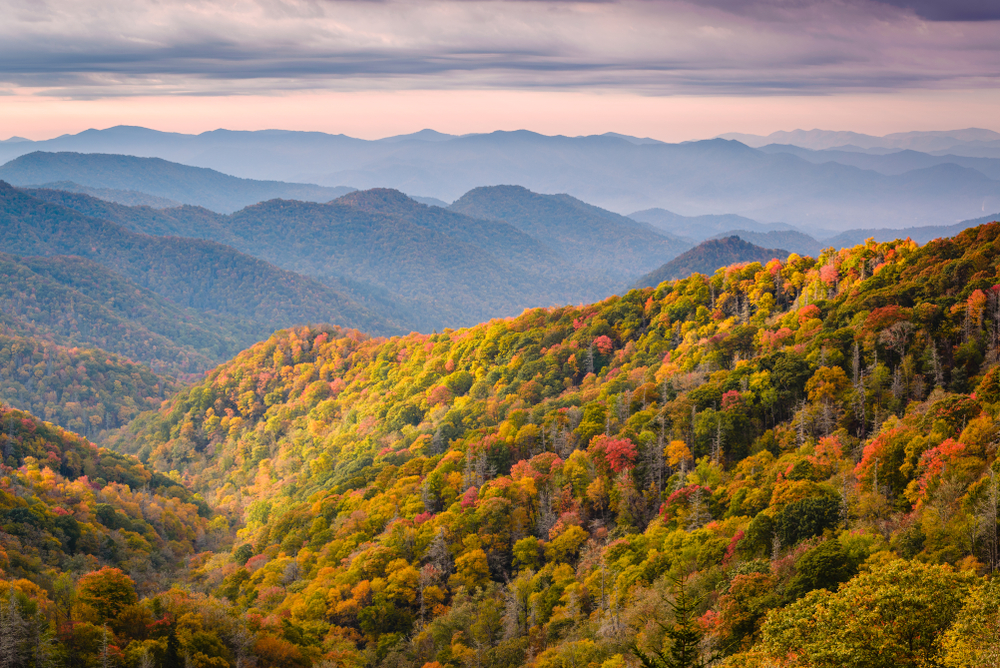
1. Great Smoky Mountains National Park, North Carolina and Tennessee
Although we associate most of the uber-popular national parks with the west coast, this east side gem saw more than 11 million visitors last year. Goodness knows it’s gorgeous, but it probably doesn’t hurt that Great Smoky Mountains National Park is one of the few that’s free to enter!
2. Grand Canyon National Park, Arizona
This one gets a cameo in National Lampoon’s Vacation for a reason — of all the amazing things to see out west, the Grand Canyon tops the charts.
Click here to see RVshare rentals near Grand Canyon National Park in Arizona.
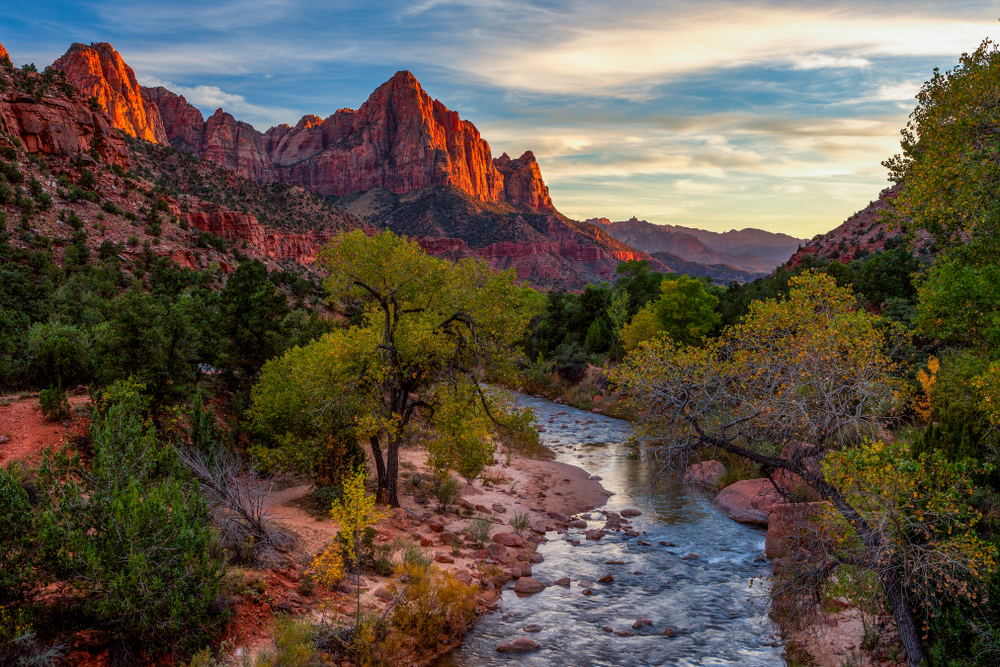
3. Zion National Park, Utah
Of the five national parks (and umpteen other amazing vistas) Utah’s got to offer, Zion is the most popular. It boasted 4.5 million visitors in 2016 alone!
Click here to see RVshare rentals near Zion National Park in Utah.
4. Rocky Mountain National Park, Colorado
Want to get high — Colorado Rocky Mountain high, that is? (Actually, in that state, you can interpret it the other way, too.)
Whether you simply drive around its stunning highways or get out and explore the mountains on foot, Rocky Mountain National Park is a guaranteed crowd pleaser. Along with its peaks, it’s got hundreds of lakes and rivers to explore, too!
Click here to see RVshare rentals near Rocky Mountain National Park in Colorado.
5. Yosemite National Park, California
You don’t have to be a world-class climber like Alex Honnold to enjoy this park’s famed rock face, El Capitan — or its dense copses of majestic sequoias. First created in 1890, this is one of the older national parks on the list.
Click here to see RVshare rentals near Yosemite National Park in California.
6. Yellowstone National Park, Wyoming, Idaho, and Montana
You already know this is the one that started it all, so why not go see why for yourself? Just be sure you give yourself lots of time to explore — at nearly 3,500 square miles, mapping just a quadrant of this park could easily take up a whole (amazing) vacation.
Click here to see RVshare rentals near Yellowstone National Park in Wyoming, Idaho, and Montana.
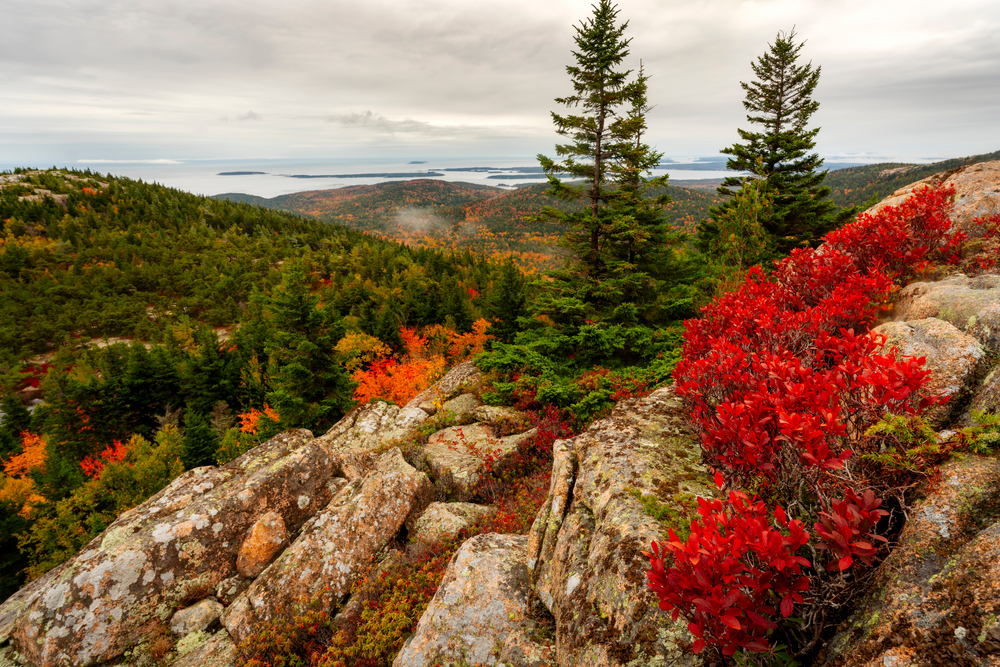
7. Acadia National Park, Maine
See, east coasters? It’s really not all out west — we promise!
The beautiful granite peaks in Acadia brush right up along Maine’s stunning coast, making for a truly unique (and totally epic) vantage point. Don’t miss a trip to the nearby gateway town of Bar Harbor, which is chock full of adorable eateries and boutiques to explore once you’re ready for some time indoors.
Click here to see RVshare rentals near Acadia National Park in Maine.
8. Olympic National Park, Washington
Just outside of Seattle, this national park is just as immense and marvelous as its name suggests. At well over a thousand square miles, the park sprawls over several different unique ecosystems — you could easily start your day on a boulder-strewn beach only to enjoy an afternoon high in the mountains.
Click here to see RVshare rentals near Olympic National Park in Washington.
9. Grand Teton National Park, Wyoming
It might not have the same reputation as its cousin just a few miles further north, but if you’re visiting Yellowstone, there’s no reason to skip out on Grand Teton. The way the mountains raise up out of the valley is just stunning, even if you do little more than drive by — but we suggest hopping out on foot and getting more familiar with them!
Click here to see RVshare rentals near Grand Teton National Park in Idaho and Wyoming.
10. Glacier National Park, Montana
Located in the remote northern wilderness where Montana borders Canada, this park may require a trek to get to — but boy, is it worth it. No matter where in its sprawling wilderness you find yourself, chances are you’ll feel like you walked into a desktop background. Just keep in mind that in this climate, snow sticks around well into June, so unless you’ve got crampons, plan to visit in July or August!
Click here to see RVshare rentals near Glacier National Park in Montana.
National Park Camping: What You Need to Know
Now that we’ve whet your appetite to create your own national parks visit, let’s talk turkey: what you need to know before you set out.
Reservations

The first thing to note is that summer is the most popular time to travel, no matter what your destination — after all, the weather’s warm and the kids are off school. But that ease and convenience means that lots of other people are going to have the same idea you do, which means you could face serious crowds at the parks, or even find yourself without a decent spot to camp if you’re not careful. Whether you plan to hunker down in the nature park itself or at one of the privately-owned satellite campgrounds in the area, we highly recommend making a reservation as far ahead of time as possible.
Each national park has different capacities as far as hookup availability, amenities, and vehicle size restrictions, and some campgrounds are closed during certain seasons. Some national parks operate only on a first-come, first-served basis, while others make it easy to reserve your spot online or by telephone.
The only way to know for sure what’s going on at your target destination is to check out its official website, which will always be linked from the National Park Service homepage. If, however, you discover there aren’t any reservations left, don’t despair! It’s well-known the national parks are big tourist draws, which means you can usually find many alternative RV camping opportunities near the park or in the area, especially around the most popular parks like Yellowstone, Yosemite, and Zion.
Fees and Passes
Keeping the National Park Service running and ensuring these sacred lands stay beautiful and wild for generations to come takes time, energy… and, yes, money. Whether it’s patching that highway you’re cruising down or installing new interpretive or recreational facilities, the parks need cash to finish their many maintenance projects — and some of that cash comes directly from park visitors.
Each park has its own specific fee schedule, and some are much costlier than others. For example, as mentioned above, Great Smoky Mountains National Park is totally free to enter, but Yellowstone charges $30 at its gate for a single vehicle.
Furthermore, in an effort to double down on their projects and repairs, some national parks are raising their fees during the busy summer travel season. We have the scoop on those national park price increases for you over at this post.
If you plan to hit multiple national parks, or if you live close enough to do several different trips over the course of the year, it might make sense to invest in the national park service’s annual pass, otherwise known as the America the Beautiful pass. For $80, the pass will get you, your vehicle, and up to three other adults into any National Park Service location free for a full year. Keep in mind, however, that your national park pass does not cover any other fees, including guided tours or camping.
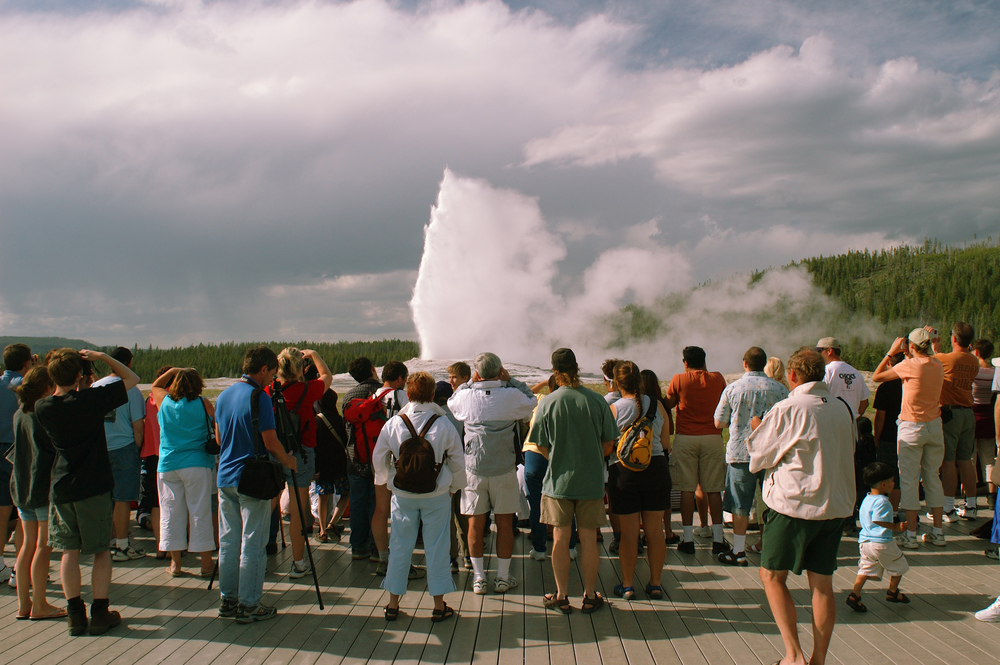
Crowds
Even the most stunning view in the universe is a little less epic when it’s crowded with people — doubly so when those people are busy using selfie sticks to try and capture the moment for posterity. (And Instagram. Okay, probably just Instagram.)
But unfortunately, crowds are a fact of life when you’re visiting the national parks, especially during the summer.
While you shouldn’t let the threat of crowds keep you from taking your dream vacation, you can modify certain plans to make for the best possible experience while you’re there. Sorry, night owls, but getting up early can help you avoid long lines at the park entry gate, as well as providing dynamic, shadowy early-morning views once you’re inside.
Early risers will also enjoy less crowded hiking and other outdoor pursuits. But keep in mind that in some parks, potentially dangerous wildlife may be more active early in the morning. Always travel in groups and prepare yourself with the proper accessories, like bear spray, when necessary.
Logging your Visits with a National Park Passport
One fun way to keep track of which national parks you’ve experienced is to invest in a National Park Passport, which is a small, spiral-bound book that allows you to collect stickers and “cancellations” (i.e., ink stamps) from each National Park Service location you visit. Along with the 60 parks outlined above, you can also find stamps and stickers available at national monuments, battlefields, and other historical parks and sites.
The National Park Service creates new stickers each year, which means your passport can become a fun project, keepsake, and collector’s item all in one. The passport also features interesting historical information about each national park, as well as the greater region in which you find it.
Although the stickers generally run about $2-$5 a piece, the cancellation stamps are available at national park visitor’s centers across the country, and they’re totally free of charge. Plus, they’re fitted with the specific date of your visit, making your passport completely unique to your own adventures.
The national park passport is an especially fun way to get your kids more involved in the trip — making a game out of collecting the stamps can make even the most skeptical child put down the iPad and check out the great, wide world around them. Additionally, the National Park Service offers a special Junior Rangers program to help teach kids more about the environment and various greening initiatives, and to get them excited about keeping our country beautiful and wild for years to come. They can even earn special Junior Ranger stamps by participating in fun, educational activities! Click here to learn more about the National Park Service’s Junior Ranger program.
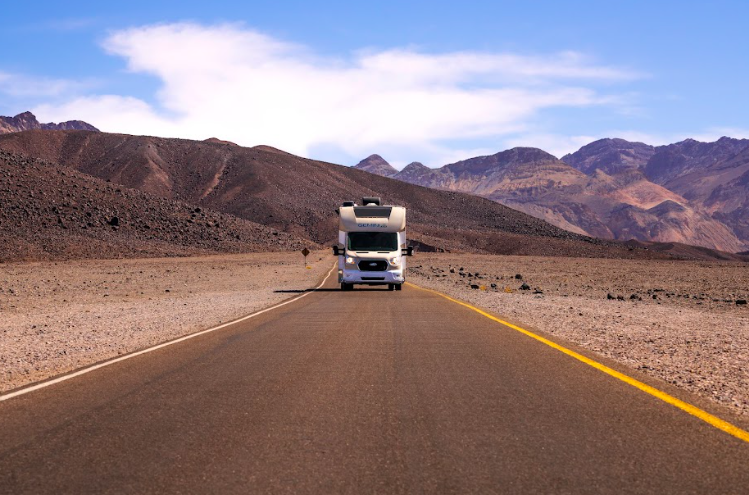
Enjoying Our National Parks on your Dream RV Vacation
We hope this post has given you all the information you need to enjoy a safe, fun, and totally mind-blowing visit to one or more of America’s national parks. Whether you’re headed out on a multi-week trek of the west, ready to collect as many of those passport stamps as possible, or you’re simply looking for a quiet weekend in the nearest national park to you, experiencing these unique landscapes isn’t just a great vacation — it’s a birthright. That’s why they’ve been preserved by previous generations, in order for us to enjoy and explore.
RVing is a perfect way to get the most out of your national parks trip; traveling with your very own private accommodations makes sleeping, eating, and relaxing easy, so you’re rested and ready to take on all the great outdoors has to offer. (Let’s not forget, either, how expensive those ritzy hotels on national park property can be!)
RV camping easily allows you to get closer to nature while still maintaining the comforts of home. In many ways, it really is the very best of both worlds. If you’ve never taken an RV before and are considering a national park adventure, it’s worth at least checking to see what listings RVshare has to offer in your area. You might be surprised at how much vehicle you can get for the price when you’re renting through the peer-to-peer market, directly from owners!
But no matter how you travel to your chosen national park or what adventures you find yourself taking on when you get there, enjoy your time in some of earth’s most cherished landscapes. By visiting them, bringing your family along with you, and supporting the efforts of our National Park Service, you’re helping to keep them around for many years and generations to come.
This post may contain affiliate links.






